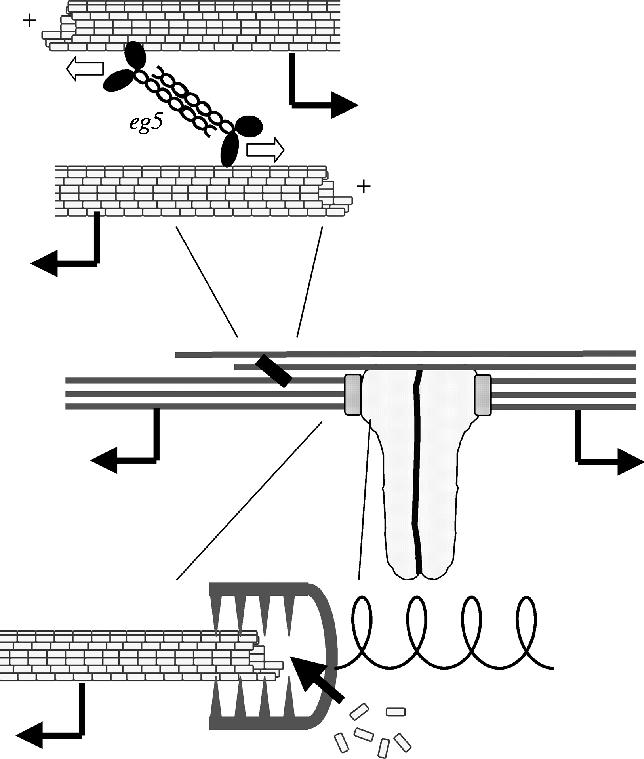Figure 6.

Forces on kinetochores at metaphase. This model, based on discussions in the MBL-CDG, seeks to integrate observations on the role of anti-parallel overlap and Eg5 in driving flux (figures 2–4) with measurements of polymerization dynamics and force production at kinetochores (Maddox et al. 2003). Kinetochore microtubules slide continuously towards their minus ends (middle panel), driven by Eg5 pushing anti-parallel microtubules apart (upper panel) and supported by polymerization of plus ends at kinetochores (lower panel). This sliding pulls the microtubule lattice through kinetochore attachment sites. Transient attachment of these sites to the lattice generates friction at the interface, leading to poleward force on kinetochores (illustrated as stretching a spring). In this model, the metaphase kinetochore is a passive force generator, analogous to the slipping clutch on a fishing reel. In anaphase, kinetochores may switch between passive and active force generation (Maddox et al. 2003).
